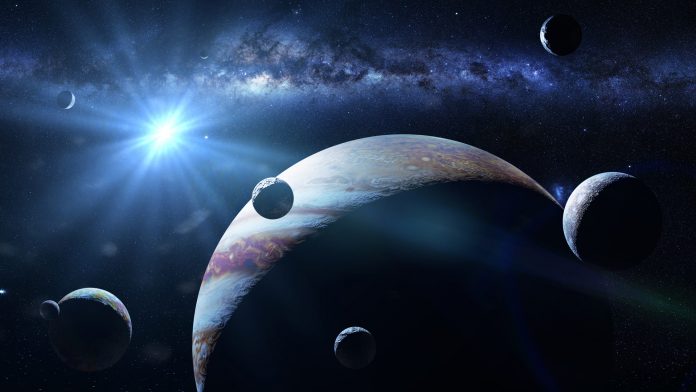Groundbreaking research conducted by scientists at Queen’s University Belfast indicates that Jupiter’s clouds hold the correct conditions to host life.
The innovative research concluded that research published by an independent team of scientists last year, claiming that the phosphine gas in Venus’ atmosphere indicates possible life in its sulphuric acid clouds, is not plausible; however, the potential for life exists in the clouds of Jupiter.
Conditions for life determined by water activity
In recent years, space exploration missions have searched for signs of life beyond Earth in places where we know that big bodies of water – like lakes or oceans – exist or once existed. However, the novel study indicates that it is not the quantity of water that holds the key for viable life, but the effective concentration of water molecules – known as ‘water activity’.
With this pioneering research project, Dr John E. Hallsworth from the School of Biological Sciences at Queen’s University, along with an international team of collaborators, have developed a technique to determine the water activity of the atmospheres of a planet. Utilising their method to observe the sulphuric acid clouds of Venus, the team discovered that the water activity was more than a hundred times below the lower limit at which life can exist on Earth.
The study has been published in Nature Astronomy.
Could there be life on Jupiter?
The study also indicated that Jupiter’s clouds have a high enough concentration of water, as well as the correct temperature, for life to exist there.
Dr Hallsworth commented: “Our research shows that the sulphuric acid clouds in Venus have too little water for active life to exist, based on what we know of life on Earth. We have also found that the conditions of water and temperature within Jupiter’s clouds could allow microbial-type life to subsist, assuming that other requirements such as nutrients are present.
“This is a timely finding given that NASA and the European Space Agency just announced three missions to Venus in the coming years. One of these will take measurements of Venus’s atmosphere that we will be able to compare with our finding.”
Dr Philip Ball, co-author of the report, an expert on physics and chemical biology of water, explained: “The search for extraterrestrial life has sometimes been a bit simplistic in its attitude to water. As our work shows, it’s not enough to say that liquid water equates with habitability. We’ve got to think too about how Earth-like organisms actually use it – which shows us that we then have to ask how much of the water is actually available for those biological uses.”
Co-author of the report, NASA-based planetary scientist Prof Christopher P. McKay, added: “We derive water activity of atmospheres without a model of any sort, based only on direct observations of pressure, temperature, and water concentration.”
Dr Hallsworth concluded: “We have also performed calculations for Mars and Earth and show that these calculations can be done for planets outside our solar system. While our research doesn’t claim that alien (microbial-type) life does exist on other planets in our solar system, it shows that if the water activity and other conditions are right, then such life could exist in places where we haven’t previously been looking.”
Further information
The research involved the participation of planetary scientist Christopher P. McKay (NASA Ames Research Center, CA, USA); atmosphere chemistry expert Thomas Koop (Bielefeld University, Germany); physics and chemical biology of water expert Philip Ball; biomolecular scientist Tiffany D. Dallas (Queen’s University Belfast); biophysics-of-lipid-membrane expert Marcus K. Dymond (University of Brighton, UK); theoretical physicist María-Paz Zorzano (Centro de Astrobiologia [CSIC-INTA], Spain); micrometeorology and aerosol expert Juergen Burkhardt (University of Bonn, Germany); expert on acid-tolerant microorganisms Olga V. Golyshina (Bangor University, UK); and atmospheric physicist and planetary scientist Javier Martín-Torres (University of Aberdeen, UK).
This novel study was funded by Research Councils UK (RCUK), Biotechnology and Biological Sciences Research Council (BBSRC) and Ministry of Science and Innovation.









